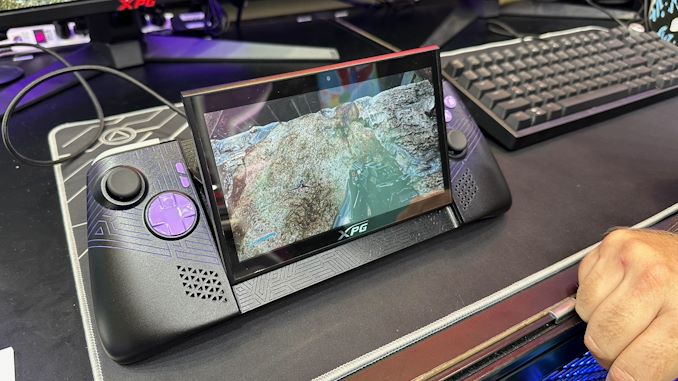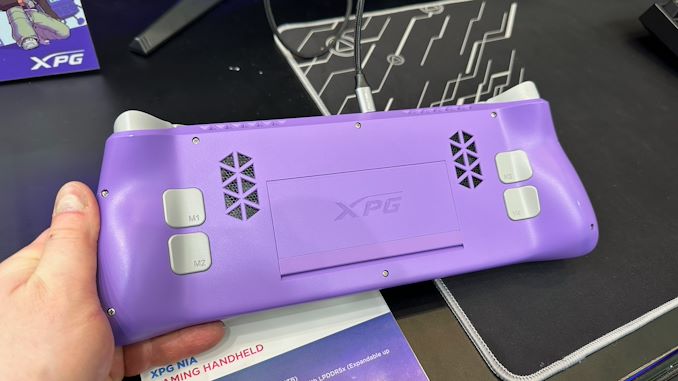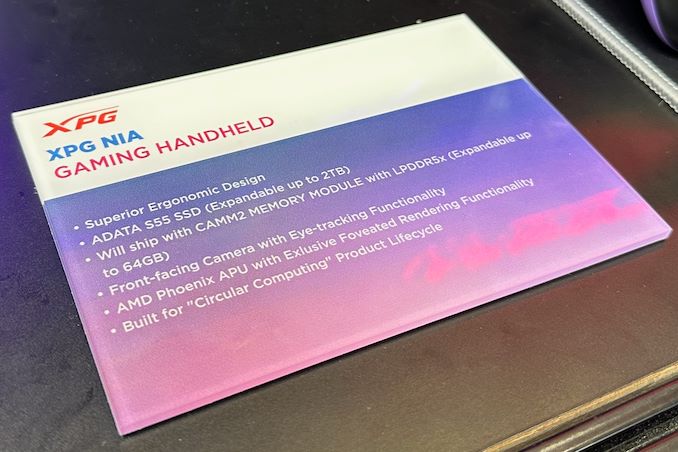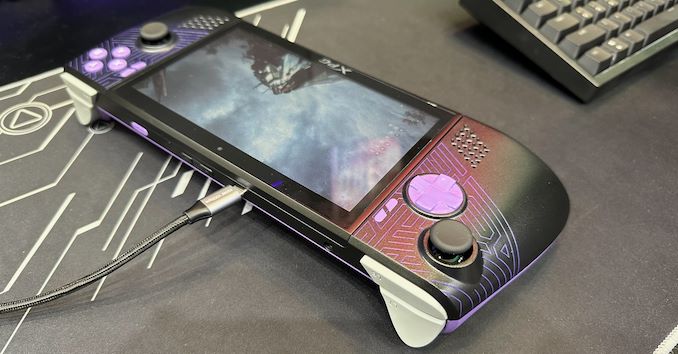With the rise of the handheld gaming PC market, we’ve seen PC vendors and their partners explore various tricks and tweaks to enhance framerates in games. Some of their latest efforts were showcased at this year’s Computex trade show. One of the most intriguing reveals comes from ADATA sub-brand XPG, which is demonstrating its prototype “Nia” handheld PC. This device utilizes eye tracking and dynamic foveated rendering to further boost rendering performance.
For those unfamiliar, dynamic foveated rendering is a graphics technique sometimes used to enhance performance in virtual reality (VR) and augmented reality (AR) applications by leveraging how human vision functions. Typically, humans can only perceive detailed imagery within the relatively small central area of our vision called the fovea, while our peripheral vision is much less detailed. Dynamic foveated rendering exploits this by using real-time eye tracking to determine where the user is looking and then rendering just that area in high/full resolution, while rendering the peripheral areas in lower resolution. The end result is that only a fraction of the screen is rendered in full detail, reducing the total rendering workload and improving framerates on performance-limited devices.
As mentioned earlier, this technology is occasionally used in high-end AR/VR headsets, where high-resolution displays are positioned mere inches from one’s face. This is an ideal use case for the technique, since at those distances, only a small fraction of the screen is within the fovea.
On the other hand, using dynamic foveated rendering for a handheld device is a novel application. While the same visual principles apply, the resolutions involved are lower, and the screen is farther from the user’s eyes. This makes a handheld device a less ideal use case, at least theoretically, as a larger portion of the screen will be within the fovea and will need to be rendered at full resolution. Nonetheless, it will be interesting to see how XPG’s efforts develop and whether dynamic foveated rendering proves beneficial for handheld PCs. As with many trade show demos, not all prototypes make it to production.
According to a press release from ADATA ahead of the trade show, the eye-tracking technology is provided by AMD collaborator Eyeware. Notably, their software-based approach operates on standard webcams, negating the need for IR cameras. Thus, the camera hardware itself should be quite straightforward.
Beyond foveated rendering, XPG ensures that the Nia won’t be a one-trick pony. The handheld’s other major feature is its hardware swappability. The prototype handheld includes a removable M.2-2230 SSD and leverages the recently introduced LPCAMM2 memory module standard to offer removable DRAM. Through a hatch in the back of the handheld, device owners can swap out LPCAMM2 LPDDR5X modules for higher capacity versions. This provides an additional degree of future-proofing over current handhelds that use non-replaceable soldered-down memory.
Rounding out the package, the current prototype is based on AMD’s Zen 4 Phoenix APU, which is used across the company’s current mobile lines (Ryzen Mobile 7000/8000 and Ryzen Z1). Additionally, the unit’s display is adjustable, allowing it to be angled away from the body of the handheld.
If everything goes according to plan with the prototype, XPG aims to release a finished product in 2025.



